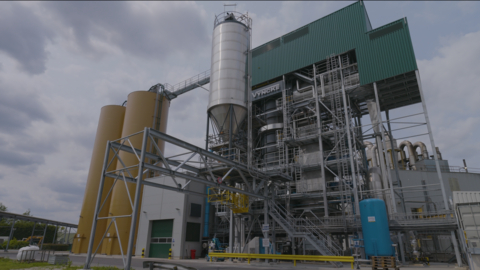Cargill has announced a sweeping transformation of its global cocoa supply chain, unveiling a series of strategic investments aimed at reducing carbon emissions, eliminating waste, and increasing operational efficiency from cocoa farms in West Africa to factories and warehouses in Europe.
The initiative integrates clean energy, circular logistics, and low-emission transport to support the company’s broader climate goal of reducing supply chain emissions by 30% per ton of product by 2030, while also cutting operational emissions by 10% by 2025.
“Sustainability isn’t a single project at Cargill—it’s how we operate,” said Emiel van Dijk, Managing Director of Cocoa & Chocolate Europe and West Africa. “From circular waste reuse to renewable transport and clean energy, we’re showing that climate action can scale, without compromise.”
In Côte d’Ivoire, cocoa shells once discarded are now used to power biomass boilers, turning agricultural waste into renewable fuel. In Ghana, a solar energy plant now powers operations in Tema, and new ISO tanks are replacing disposable packaging—cutting up to 100 metric tons of waste each month.
Once cocoa products arrive in Europe, they are funneled through a fully integrated, sustainable logistics network. At the heart of this network is solar-powered warehousing near Amsterdam, and a groundbreaking transportation solution: the world’s first fully electric barges, which carry cocoa beans to Cargill’s Zaandam factory. This initiative alone eliminates 190,000 kilograms of CO₂ emissions annually.
The electricity powering both the barges and Cargill’s Dutch cocoa processing sites is generated by Windpark Hanze, a renewable energy project developed in partnership with Vattenfall.
Further downstream, cocoa shells are reused again—this time in a newly commissioned biomass boiler in Amsterdam, which cuts greenhouse gas emissions by nearly 19,000 tons annually. Combined with the wind farm’s output, Cargill expects a total reduction of 31,000 tons of CO₂ per year, equivalent to a 90% drop in site emissions.
Transport of semi-finished cocoa products continues using BIO LNG-fueled trucks, while finished goods are stored at a high-tech warehouse in Zaandam, operated by Green Valley Cocoa Logistics. The facility incorporates solar panels, automated vehicles, and intermodal rail and barge systems to minimise last-mile impact.
The final stage brings semi-finished cocoa to Cargill’s own chocolate plants and to customers across Europe via short sea shipping and renewable-fueled vehicles.
“This is what sustainability at scale looks like,” van Dijk added. “It’s measurable, circular, and designed to serve both people and the planet.”
As one of the world’s largest cocoa processors, Cargill’s integrated approach highlights how global supply chains can evolve to meet ambitious climate targets—without compromising performance or scale.

